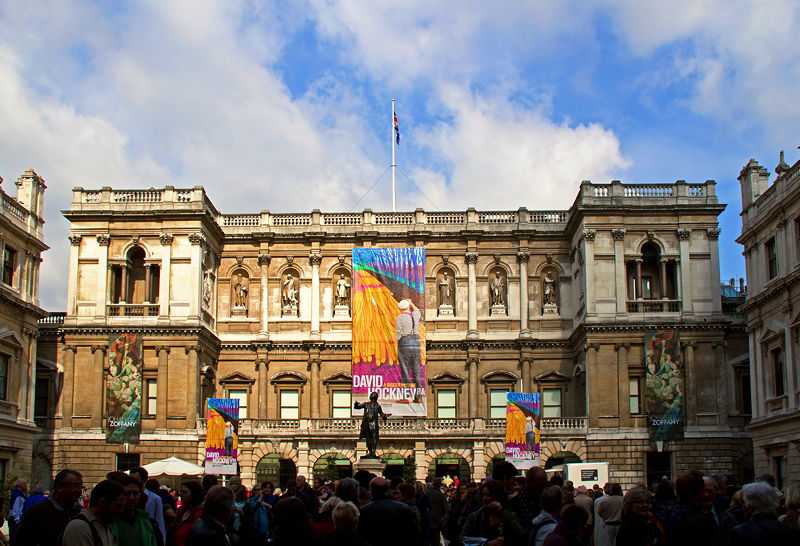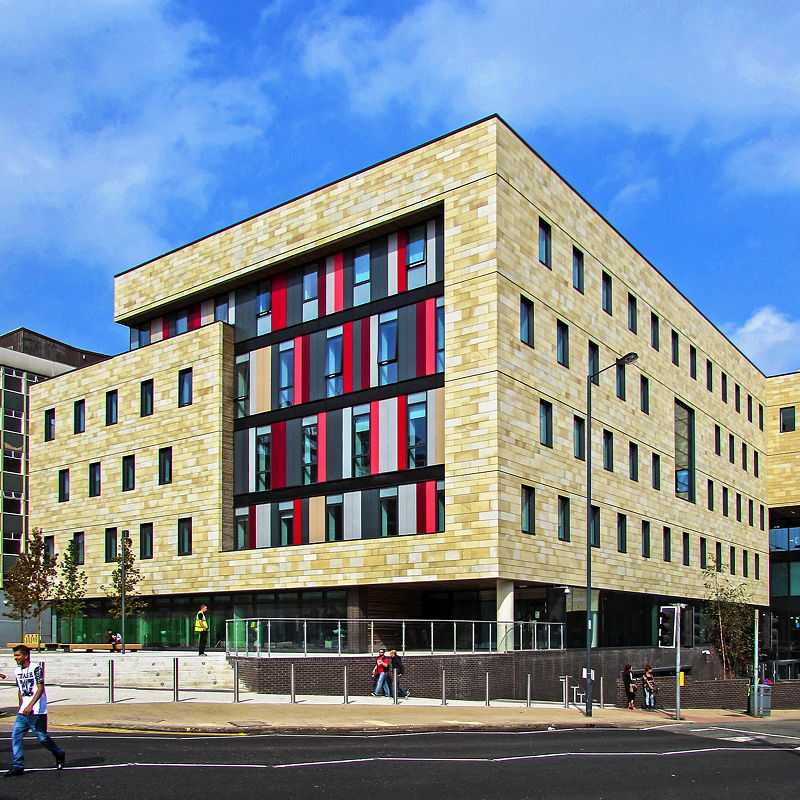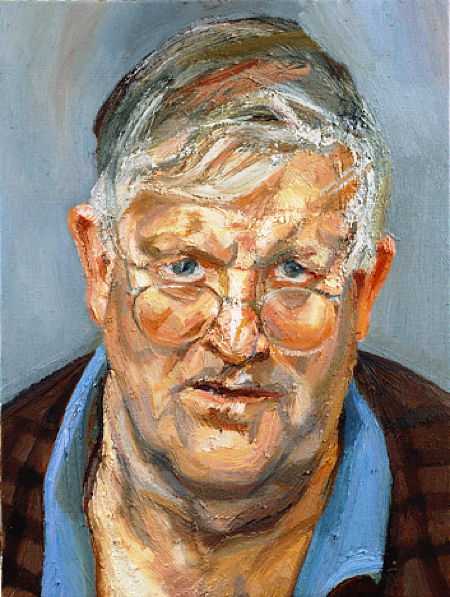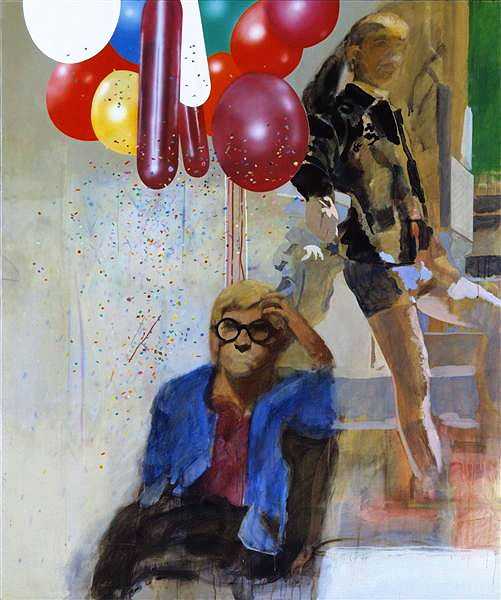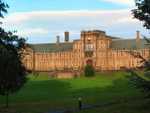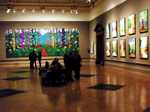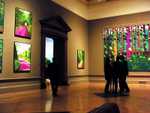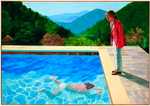1. Hockney’s Early Life
Hockney was born in Bradford, West Yorkshire, England, to Laura and Kenneth Hockney on 9 July 1937. He was the fourth of five children.
His father, a conscientious objector during the Second World War, "had a kind heart" remembers Hockney: "He thought there should be justice in the world". While adopting his father's anti-war stance, Hockney himself remained resistant to ideologies and hierarchies.
Hockney was educated at Wellington Primary School and Bradford Grammar School. The young Hockney loved books and art, citing Picasso, Matisse and Fragonard as early influences.
Hockney’s parents encouraged their son’s artistic exploration, and gave him the freedom to doodle and daydream. At his school academically promising boys were forced to drop art as a subject and so he deliberately failed his exams.
At 16, Hockney was admitted to the Bradford School of Art, where he studied traditional painting and life drawing alongside Norman Stevens, David Oxtoby, and John Loker. Unlike most of his peers Hockney was working class, and he worked tirelessly, especially in his life drawing classes, recalling: "I was there from nine in the morning till nine at night."
In 1957 he was called up for National Service, but as a conscientious objector to war, like his father previously, he served out his time as a hospital orderly. It was around this time that Hockney encountered the work of Russian ballet impresario Sergei Diaghilev, whose openness about his sexuality gave Hockney the courage to reveal his own homosexuality.
In 1959, Hockney went on to study at the Royal College of Art (RCA) in London. It was during this time that Hockney met the renowned American artist R.B Kitaj, who influenced him greatly. At the time, the college asked students to submit an essay along with their final work.
Hockney refused, wanting to be judged solely on the basis of his art and in protest, the artist painted Life Painting for a Diploma. Recognising his talent and growing reputation, the RCA changed its regulations and awarded the diploma.
2. Hockney’s move to Los Angeles
After leaving the RCA, he taught at Maidstone College of Art for a short time, before heading to Los Angeles in 1964 where he was inspired to make a series of paintings of swimming pools in the comparatively new acrylic medium using vibrant colours.
The artist lived back and forth among Los Angeles, London, and Paris in the late 1960s to 1970s. Spending much of his time in California during the 1960s, Hockney taught at various universities including Berkeley and UCLA.
During this period he painted some of his best-known works, including A Bigger Splash (1967). In A Bigger Splash, Hockney explored how to represent the constantly moving surface of the water. The splash was based on a photograph of a swimming pool Hockney had seen in a pool manual. He was intrigued by the idea that a photograph could capture the event of a split second, and sought to recreate this in painting.
During the “swinging ‘60s”, Hockney also embraced experimentation, exploration, and iconoclasm. At a time when homosexuality was still illegal in the US and Britain, Hockney's open love affairs and unapologetic attitude attracted the attention of the press. He met Peter Schlesinger, who also frequently acted as his model, with whom he was in a relationship with from 1966 to 1971.
From 1968, and for the next few years, he painted life-size portraits and double portraits of friends, lovers and relatives including fashion designers Celia Birtwell and Ossie Clark, curator Henry Geldzahler, art dealer Nicholas Wilder, and his ballet dancer lover Wayne Sleep. Over the years, Hockney created over 300 self-portraits.
Hockney also spent time painting the interiors and exteriors of California homes, which while doing so he managed to create, albeit by accident, his legendary photo collages which he penned the “joiner”. Fixing photos together in a grid so he could paint from the image, the first joiner was a series of Polaroid photos that he took in 1970 for his own reference.
By the mid 1970s, he had all but abandoned painting in favour of projects involving photography, lithographs, and set and costume design for the ballet, opera and theatre.
In the late 1980s, Hockney returned to painting, primarily painting seascapes, flowers and portraits of loved ones. He also began incorporating technology in his art, creating his first homemade prints on a photocopier in 1986.
And in 2009, he started using the Brushes app on iPhones and iPads to create paintings. A 2011 exhibit at the Royal Museum of Ontario showcased 100 of these paintings.
In 1991, he began a relationship with John Fitzherbert, a former chef, which lasted for the next 25 years. One of his most important large-scale works, A Closer Grand Canyon, was completed in 1998.
In 2002, Hockney moved to the Yorkshire seaside town of Bridlington. In the same year, he sat for 120 hours for a portrait painted by Lucian Freud. In return, Freud sat for four hours for him.
Hockney had a stroke in 2012, which for a while impaired his speech. Much to his relief, he said: "the stroke didn't affect my drawing, and that's the most important thing." Only a few months later, one of his assistants, Dominic Elliot, died in Hockney's Bridlington home.
He had taken cocaine and ecstasy and drank a bottle of drain cleaner. Elliot had been in a relationship with Hockney's former partner John Fitzherbert, who was still living with him. The high-profile inquest returned a verdict of death by misadventure and Hockney was never implicated. In November 2015 Hockney sold his house in Bridlington, and cut all remaining ties with the town.
3. Hockney’s Legacy
The legendary British artist, who has been featured in over 400 solo exhibitions and over 500 group exhibitions, was rated the most influential artist of all time by a poll of art students in 2011.
Having invented the “joiners”, an art form that has been utilised in fashion photography and editorial, David Hockney has had considerable influence on the fashion world. In 2005 Burberry creative director Christopher Bailey centred his entire spring/summer menswear collection around the artist.
Hockney too has been celebrated for his personal style and in 2012, fashion designer Vivienne Westwood, a close friend, named a checked jacket after Hockney. In 2011 British GQ named him one of the 50 Most Stylish Men in Britain and in March 2013 he was listed as one of the Fifty Best-dressed Over-50s by The Guardian.
Celebrated by many, David Hockney has won numerous art prizes and in 1990, he famously declined a knighthood before finally accepting an Order of Merit in 2012. Hockney once said: "I don't have strong feelings about the honours system. I don't value prizes of any sort. I value my friends."
Now in his 80s, Hockney is still prolific, and continues to be experimental and embrace modern technologies in his art.
In 2018, he exhibited his most recent artworks on hexagonal canvases and mural-size 3D photographic drawings at Pace Gallery in New York. For the series, he revisited previous paintings of Garrowby Hill, the Grand Canyon, and Nichols Canyon Road, this time painting them on hexagonal canvases to enhance aspects of reverse perspective.
